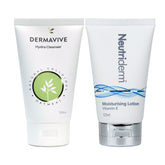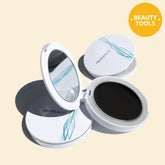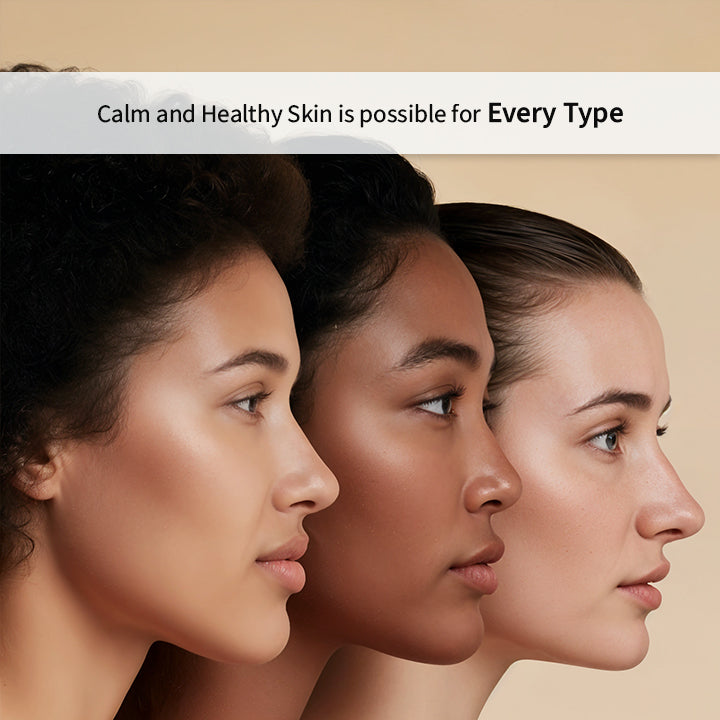Sensitive skin is not a myth, a trend, or just an excuse. It’s a real, often frustrating, condition that affects a lot of people, regardless of their specific skin type. Whether your skin is oily and sensitive, dry and sensitive, or somewhere in the middle, navigating your skincare can feel like walking a tightrope.
This isn’t just about redness or a little bit of tightness. It's about a skin barrier that isn’t as resilient as it should be, leaving you vulnerable to a whole host of pain points. In this blog, let's break down what's really happening with sensitive skin, explore the unique challenges for different skin types, and then get into some practical, no-nonsense tips to help you take back control.
The Pain Points of Sensitive Skin
Here's the thing, sensitive skin often feels like it's constantly on high alert. Your skin reacts strongly to things that others don't even notice, leading to a host of uncomfortable sensations. Think about it—the burning, stinging, itching, or tingling you feel after using a new product. That’s your skin's way of telling you its protective barrier is compromised. It’s a literal warning sign that irritants are getting in and moisture is getting out.
This heightened reactivity can show up in different ways, depending on your underlying skin type.
-
For oily skin: You might be trying to combat shine with harsh, stripping products. What this means is, you're aggravating your sensitive skin, leading to more inflammation, redness, and even more oil production as your skin tries to overcompensate. It’s a cycle of irritation.
-
For dry skin: The pain points are often more obvious. The skin feels tight and rough, maybe even flaky. This is directly related to a weakened barrier that can't hold onto moisture. You're constantly trying to quench your skin's thirst, but it just can't seem to hold on to the water.
-
For combination skin: You get the worst of both worlds—an oily T-zone that's still prone to irritation, and dry cheeks that feel tight and sensitive. Balancing this requires a strategy that doesn’t just focus on one area but soothes the skin as a whole.
Your Skincare Survival Guide
The core principle for managing sensitive skin is to protect and repair your skin’s barrier. Forget about aggressive treatments and harsh exfoliants. It's time to get back to the basics with products that work with your skin, not against it.
A good skincare routine for sensitive skin has two non-negotiable steps: gentle cleansing and deep hydration.

Step 1: Cleanse with Care
The first step in any routine should be a cleanser that purifies without stripping. For sensitive skin, you need something that removes dirt, oil, and impurities while maintaining your skin’s natural moisture.
A great example of this is the Dermavive Hydra Cleanser. This product is soap-free and pH-balanced, so it won’t mess with your skin's delicate balance. It contains natural colloidal oatmeal, a hero ingredient known for its ability to soothe and soften the skin. It cleanses deeply to clear out clogged pores but leaves your skin feeling nourished and comfortable, never tight or stripped.
Step 2: Hydrate, Hydrate, Hydrate
Once your skin is clean, it's time to restore and lock in moisture. For sensitive skin, a moisturizer needs to do more than just sit on the surface; it needs to actively support the skin barrier.
Look for a product like the Neutriderm Ultimate Hydrating Cream. It’s non-comedogenic and formulated to provide deep hydration without clogging pores. What makes it particularly useful for sensitive skin is its blend of antioxidants and a special Vitamin E derivative that works to reduce redness and promote a more even skin tone. This cream is not just a moisturizer; it's a multitasking treatment that helps your skin heal and protect itself.
Tips to Remember
-
Don't overload your skin with a dozen different products. Stick to a gentle cleanser, a targeted serum, and a hydrating moisturizer. Less is almost always more.
-
Pay close attention to what causes your skin to react. It could be fragrances, harsh chemicals, or even environmental factors like wind or cold. Once you identify your triggers, avoid them like the plague.
-
When you wash your face, use lukewarm water and your fingertips. Pat your skin dry with a soft towel instead of rubbing. Treat your skin with the respect it deserves.
-
Sun damage is a major trigger for sensitive skin. A broad-spectrum sunscreen is a non-negotiable, non-fluffy part of your daily routine.
The Takeaway
Living with sensitive skin doesn’t have to be a constant struggle. By understanding its unique needs and treating it with a thoughtful, gentle approach, you can create a routine that calms and strengthens your skin. It’s about building a foundation of healthy habits and intentional product choices that help your skin thrive.
Frequently Asked Questions
Q: Can I use a face scrub if I have sensitive skin?
A: It's best to avoid physical scrubs with granules. They can create micro-tears in the skin, further compromising your barrier. If you want to exfoliate, look for a very gentle, enzyme-based product that works to dissolve dead skin cells without physical friction.
Q: How do I know if a new product will irritate my skin?
A: Always do a patch test. Apply a small amount of the product to a discreet area, like your wrist or behind your ear, and wait 24 to 48 hours. If there's no redness, itching, or irritation, you're likely in the clear.
Q: Is "hypoallergenic" or "dermatologist-tested" a guarantee?
A: These terms can be helpful indicators, but they are not a guarantee. They simply mean the products were designed to minimize allergic reactions or were tested by dermatologists. You should still check the ingredients and patch test before using the product on your face.
Q: How can I tell the difference between sensitive skin and an allergy?
A: Sensitive skin reactions are often a result of a compromised barrier and can be caused by a variety of irritants, with symptoms like stinging or burning. An allergic reaction is an immune response to a specific ingredient, often resulting in a more defined rash or hives. If you suspect an allergy, it's best to see a doctor or dermatologist for testing.








